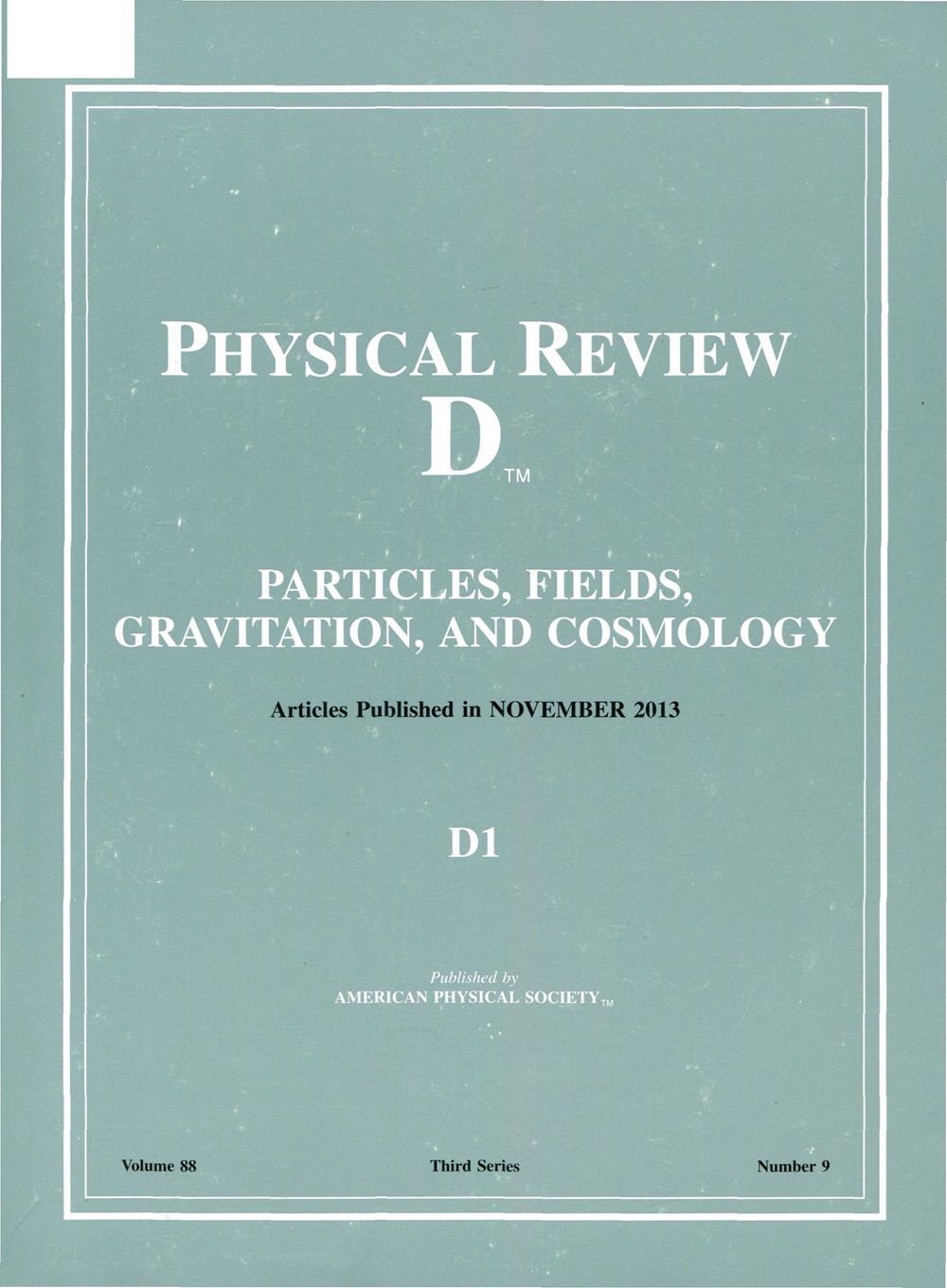Extremal black hole weather
IF 5.3
2区 物理与天体物理
Q1 Physics and Astronomy
引用次数: 0
Abstract
We consider weakly nonlinear gravitational perturbations of a near-extremal Kerr black hole governed by the second-order vacuum Einstein equation. Using the GHZ [for , ], these are parametrized by a Hertz potential. We make an ansatz for the Hertz potential as a series of zero-damped quasinormal modes (QNMs) with time-dependent amplitudes, and derive a nonlinear dynamical system for them. We find that our dynamical system has a time-independent solution within the near-horizon scaling limit. This equilibrium solution is supported on axisymmetric modes, with amplitudes scaling as cℓ∼Clow2−ℓ2ℓ−72 for large polar angular momentum mode number极端黑洞天气
我们考虑由二阶真空爱因斯坦方程控制的近极值克尔黑洞的弱非线性引力摄动。使用GHZ [for,],这些是由赫兹电位参数化的。我们将赫兹电位分析为一系列具有时间依赖性振幅的零阻尼拟正态模态(QNMs),并推导出它们的非线性动力系统。我们发现动力系统在近视界尺度极限内具有一个与时间无关的解。该平衡解在轴对称模态上得到支持,对于较大的极性角动量模态数,其振幅标度为c ~ Clow2−l_2 ~ l_2−72,其中Clow是低r模态的累积振幅。我们将我们的结果解释为动力演化将接近的证据,在一个参数化的长时间内,当极值接近时,模态振幅的分布指数地抑制在,因此作为一个反级联的终点。它使人联想到某些旋转体大气动力学模型中的类似天气的现象。在考虑的时间尺度内,量子粒子本身的衰变在其参数化长半衰期下不起作用。因此,我们的结果完全是由于弱非线性效应。2025年由美国物理学会出版
本文章由计算机程序翻译,如有差异,请以英文原文为准。
求助全文
约1分钟内获得全文
求助全文
来源期刊

Physical Review D
物理-天文与天体物理
CiteScore
9.20
自引率
36.00%
发文量
0
审稿时长
2 months
期刊介绍:
Physical Review D (PRD) is a leading journal in elementary particle physics, field theory, gravitation, and cosmology and is one of the top-cited journals in high-energy physics.
PRD covers experimental and theoretical results in all aspects of particle physics, field theory, gravitation and cosmology, including:
Particle physics experiments,
Electroweak interactions,
Strong interactions,
Lattice field theories, lattice QCD,
Beyond the standard model physics,
Phenomenological aspects of field theory, general methods,
Gravity, cosmology, cosmic rays,
Astrophysics and astroparticle physics,
General relativity,
Formal aspects of field theory, field theory in curved space,
String theory, quantum gravity, gauge/gravity duality.
 求助内容:
求助内容: 应助结果提醒方式:
应助结果提醒方式:


